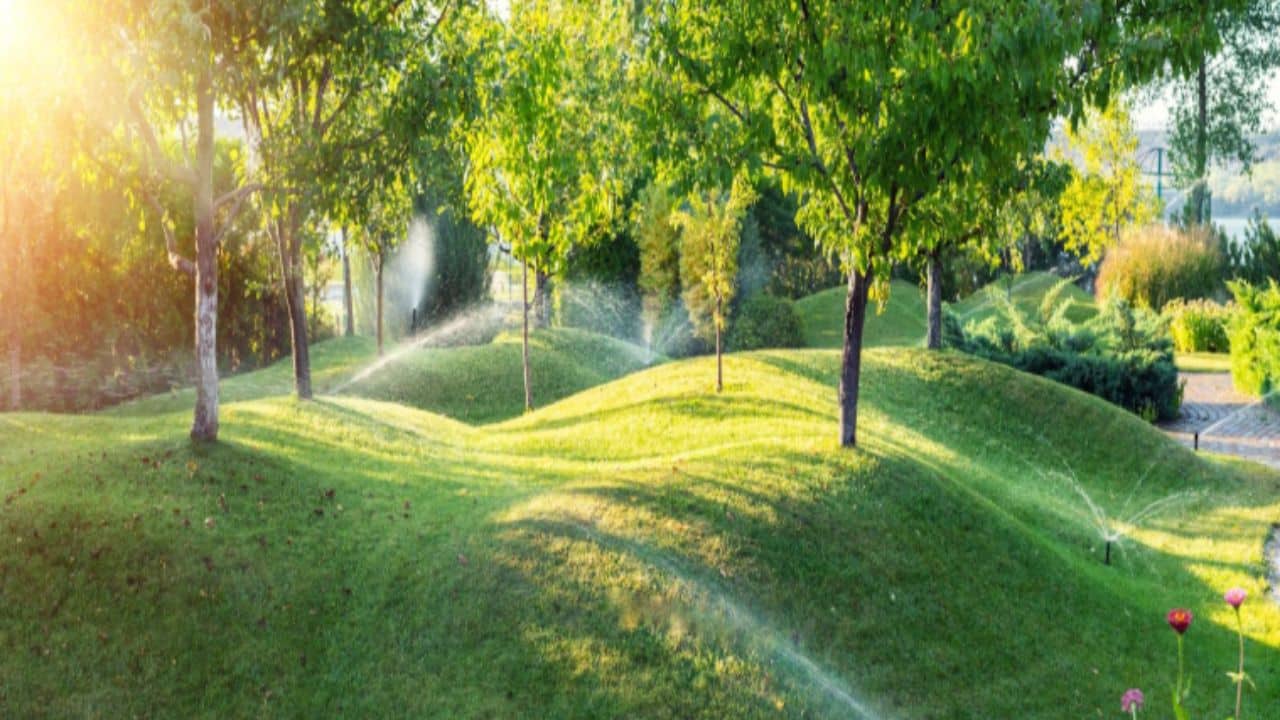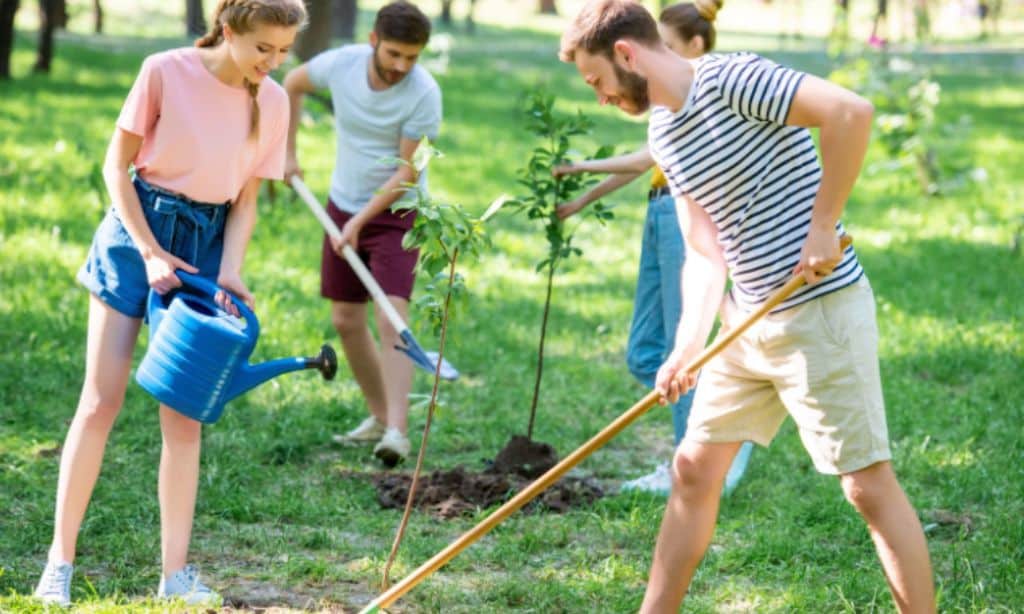Cities worldwide are grappling with sustainability challenges as they expand and modernise. The pressing need for greener, more sustainable urban environments has led many to explore the potential of natural solutions, such as planting native trees. The role of trees in urban settings extends far beyond aesthetics; they play a crucial part in maintaining ecological balance, enhancing biodiversity, and improving the quality of life for urban residents.
Native trees, in particular, are tailored to their local environment, offering numerous benefits compared to non-native species. They bolster local ecosystems, providing food and habitat for native wildlife, while also being more adaptable to the local climate. By increasing their presence in urban areas, cities can enhance their resilience to climate change, accommodate wildlife, and enjoy various environmental benefits that make urban living healthier and more sustainable.
This article examines the advantages of incorporating native trees into urban landscapes, their profound impact on environmental, economic, and social fronts, and the steps to implement successful native tree planting programs. It also explores the challenges cities may face in this endeavour and offers insights into the future prospects of urban forestry innovations.
The Environmental Benefits of Native Trees in Urban Areas
The environmental benefits of planting native trees in urban areas are substantial and multifaceted. One of their primary contributions is improving air quality. Native trees act as natural air filters, trapping pollutants like particulate matter, nitrogen oxides, and sulphur dioxide while continually producing oxygen. This purifying effect is crucial in cities, where pollution from vehicles and industrial activities often degrades air quality.
Beyond cleansing the air, native trees help mitigate the urban heat island effect. Cities generally experience higher temperatures due to human activities and heat-retaining infrastructure like concrete and asphalt. Native trees, with their cooling canopies, reduce ambient temperatures through shade and evapotranspiration—a process where trees release water vapor from their leaves, cooling the air in the process. Studies have shown that well-vegetated urban areas can be several degrees cooler than their treeless counterparts, underscoring the potential of native trees to create more comfortable urban climates.
A key aspect of native tree benefits is their role in supporting local wildlife and biodiversity. By providing food, shelter, and breeding grounds, they support various animal species, from birds and insects to small mammals. This fostering of biodiversity is essential in cities, where natural habitats are often lost to development. Native trees can help recreate these habitats, promoting healthy ecosystems even in built-up areas.
In terms of water management, native trees contribute significantly to soil stability and stormwater absorption. Their root systems bind the soil, reducing erosion and helping to maintain soil quality. Furthermore, native tree canopies slow down rainwater, which allows it to penetrate the ground more effectively rather than running off and overwhelming urban drainage systems. This capability not only reduces the risk of flooding but also replenishes groundwater reserves, making native trees a natural ally in sustainable urban water management.
Economic and Social Impact of Urban Native Tree Planting
The economic advantages of planting native trees in urban areas are equally compelling. Tree-lined streets and green spaces enhance property values by improving neighbourhood aesthetics and livability. Studies have demonstrated that properties with mature trees or proximity to parks and green areas attract higher prices and quicker sales, providing a financial incentive for urban greening initiatives.
Economically, native tree planting also generates employment opportunities. From the nursery stages to planting and ongoing maintenance, urban forestry supports various jobs, offering careers for arborists, landscape architects, and green infrastructure specialists. By fostering a green industry, cities can create sustainable jobs while improving their environments.
Socially, native trees contribute to community well-being by creating inviting spaces for recreation and relaxation. Green spaces are known to reduce stress, boost mood, and encourage physical activity. They offer a refuge from the bustle of urban life and promote a sense of belonging and community among residents. Moreover, urban greening initiatives that involve community participation can strengthen social ties and foster a collective sense of ownership and pride in local neighbourhoods.
Another practical advantage of native trees is their capacity to reduce energy costs. Strategically planted trees around buildings can significantly lower temperatures inside by providing shade during hot months and acting as windbreaks in winter, thereby reducing the need for heating and cooling. This natural insulation translates into lower energy bills, benefiting both the environment and the economy.
Steps to Successfully Implement Native Tree Planting Programs
Embarking on a native tree-planting program requires thoughtful planning and collaboration. An essential first step is the selection of appropriate native species that will thrive in specific urban environments. Considerations should include the local climate, soil type, and available space. Consulting with environmental specialists or local botanists can ensure the right tree species are chosen, leading to healthier and more sustainable growth.
Collaboration between city planners, environmental groups, and residents is critical in rolling out successful tree-planting initiatives. Urban planning should integrate green spaces and corridors that accommodate native tree planting. Moreover, partnerships with environmental NGOs can provide expertise and resources to facilitate the implementation of projects. Engaging residents through community meetings and workshops ensures local support and can provide valuable input on the preferred outcomes of planting projects.
Once the groundwork is set, best practices in planting and maintenance must be emphasised to guarantee tree survival and growth. This involves planting at the correct time of year, typically in cooler months, ensuring adequate watering and mulching to retain moisture, and providing sufficient space for roots and canopies to spread. Regular maintenance, including pruning and health checks, helps trees remain robust and healthy, benefiting the ecosystem for years to come.
Community involvement and public education are crucial in fostering a culture that values native tree planting. Awareness campaigns, educational programs, and volunteer planting days can engender enthusiasm and support for ongoing initiatives. Additionally, providing training on the benefits of native trees and their care can empower residents to play an active role in maintaining their urban forests.
Overcoming Challenges in Urban Native Tree Planting
While the advantages of native tree planting are clear, significant challenges can arise in urban contexts. Limited space in densely populated areas often restricts where trees can be planted. Innovative solutions such as vertical gardens, green rooftops, and mini-parks can overcome spatial constraints, allowing trees to be integrated into unconventional urban settings.
Urban development pressures frequently compete with green space preservation. Implementing policies that mandate or incentivise green initiatives within urban planning frameworks can align development goals with environmental conservation. Enhanced zoning regulations can preserve critical habitats and ensure that new developments include adequate green spaces.
Soil quality and pollution present additional hurdles. Urban soils may lack nutrients or be compacted, making them unsuitable for planting without intervention. Techniques like soil remediation, the addition of organic matter, and aeration can improve soil conditions, enabling healthy tree growth even in challenging environments.
Furthermore, securing long-term funding and policy support is vital for the success of native tree-planting programs. Public-private partnerships, government grants, and community fundraising can provide crucial financial backing for these initiatives. Continuous advocacy and demonstrating the multifaceted benefits of native tree planting help maintain momentum and encourage policymakers to endorse urban greening agendas.
Several cities around the world have effectively integrated native trees into their urban planning, offering valuable lessons and models for others to follow. For instance, Melbourne’s Urban Forest Strategy aims to increase tree coverage to combat the urban heat island effect and enhance biodiversity. By planting a diverse mix of native species, they’ve set a standard for balancing urban development with ecological preservation.
Future Perspectives and Innovations in Urban Forestry
The future of urban forestry is bright, with cutting-edge technologies and innovative approaches reshaping how cities incorporate green elements. Technological advancements in tree planting and maintenance, such as drones for monitoring tree health and smart watering systems that optimise irrigation, are revolutionising urban greening methods.
Integrating native tree planting with smart city initiatives presents intriguing opportunities. For example, data-driven models can assess urban areas to identify optimal planting sites, predicting how different trees will affect microclimates and biodiversity. Smart sensors embedded in the urban infrastructure can monitor environmental conditions, enabling dynamic and responsive management of urban forests.
Emerging research continues to illuminate the myriad benefits native trees offer in urban environments. Studies are increasingly using complex modelling to predict long-term ecological outcomes of planting different native species, helping urban planners make informed decisions that maximise benefits.
Looking ahead, innovative urban planning that integrates native trees into more facets of city life will likely become the norm. Trends such as rewilding urban landscapes, where cities encourage the return of native flora and fauna, are gaining traction worldwide. Emphasising the role of native trees in sustainable architecture and urban design paves the way for healthier, more resilient cities.
Conclusion
The move towards embracing native tree planting in cities marks a significant step forward in achieving sustainable urban living. From enhancing air and water quality to mitigating urban heat and fostering biodiversity, the advantages are extensive. Economically, they boost property values and employment, while socially, they enrich urban life and community welfare.
As we summarise these key points, the long-term benefits of native trees for environmental, economic, and social sustainability become apparent. The collective effort of city planners, residents, and organisations can lead to the realisation of these benefits, ensuring that urban centres remain vibrant, thriving, and resilient against future challenges.
With conscious effort and collaboration, native trees can play a critical role in shaping the future of urban sustainability. As cities continue to grow and evolve, prioritising their inclusion in urban environments will not only enhance urban livability today but also safeguard the ecological balance for generations to come.






































